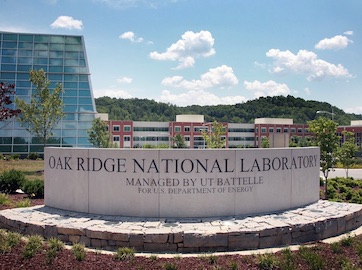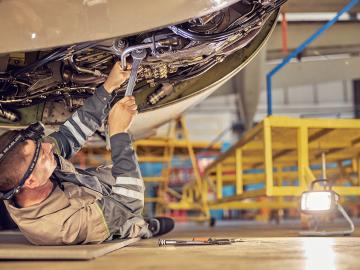Filter Results
Related Organization
- Biological and Environmental Systems Science Directorate
(29)
- Computing and Computational Sciences Directorate (39)
- Energy Science and Technology Directorate (229)
- Fusion and Fission Energy and Science Directorate
(24)
- Information Technology Services Directorate (3)
- Isotope Science and Enrichment Directorate (7)
- National Security Sciences Directorate (20)
- Neutron Sciences Directorate (11)
- Physical Sciences Directorate (138)
- User Facilities (28)
Researcher
- Brian Post
- Peter Wang
- Andrzej Nycz
- Blane Fillingim
- Chris Masuo
- Sudarsanam Babu
- Thomas Feldhausen
- Ahmed Hassen
- Alex Roschli
- Eddie Lopez Honorato
- J.R. R Matheson
- Joshua Vaughan
- Lauren Heinrich
- Peeyush Nandwana
- Ryan Heldt
- Soydan Ozcan
- Tyler Gerczak
- Xianhui Zhao
- Yousub Lee
- Adam Stevens
- Amit Shyam
- Brian Gibson
- Callie Goetz
- Cameron Adkins
- Christopher Fancher
- Christopher Hobbs
- Chris Tyler
- Craig Blue
- David Olvera Trejo
- Erin Webb
- Evin Carter
- Fred List III
- Gordon Robertson
- Halil Tekinalp
- Isha Bhandari
- Jay Reynolds
- Jeff Brookins
- Jeremy Malmstead
- Jesse Heineman
- John Lindahl
- John Potter
- Keith Carver
- Kitty K Mccracken
- Liam White
- Luke Meyer
- Matt Kurley III
- Mengdawn Cheng
- Michael Borish
- Oluwafemi Oyedeji
- Paula Cable-Dunlap
- Rangasayee Kannan
- Richard Howard
- Ritin Mathews
- Rodney D Hunt
- Roger G Miller
- Ryan Dehoff
- Sanjita Wasti
- Sarah Graham
- Scott Smith
- Steven Guzorek
- Thomas Butcher
- Tyler Smith
- Vlastimil Kunc
- William Carter
- William Peter
- Yukinori Yamamoto

We have developed a novel extrusion-based 3D printing technique that can achieve a resolution of 0.51 mm layer thickness, and catalyst loading of 44% and 90.5% before and after drying, respectively.

A pressure burst feature has been designed and demonstrated for relieving potentially hazardous excess pressure within irradiation capsules used in the ORNL High Flux Isotope Reactor (HFIR).

This manufacturing method uses multifunctional materials distributed volumetrically to generate a stiffness-based architecture, where continuous surfaces can be created from flat, rapidly produced geometries.

The lack of real-time insights into how materials evolve during laser powder bed fusion has limited the adoption by inhibiting part qualification. The developed approach provides key data needed to fabricate born qualified parts.

Sintering additives to improve densification and microstructure control of UN provides a facile approach to producing high quality nuclear fuels.

The use of biomass fiber reinforcement for polymer composite applications, like those in buildings or automotive, has expanded rapidly due to the low cost, high stiffness, and inherent renewability of these materials. Biomass are commonly disposed of as waste.

A valve solution that prevents cross contamination while allowing for blocking multiple channels at once using only one actuator.

Materials produced via additive manufacturing, or 3D printing, can experience significant residual stress, distortion and cracking, negatively impacting the manufacturing process.

This work seeks to alter the interface condition through thermal history modification, deposition energy density, and interface surface preparation to prevent interface cracking.

Additive manufacturing (AM) enables the incremental buildup of monolithic components with a variety of materials, and material deposition locations.

